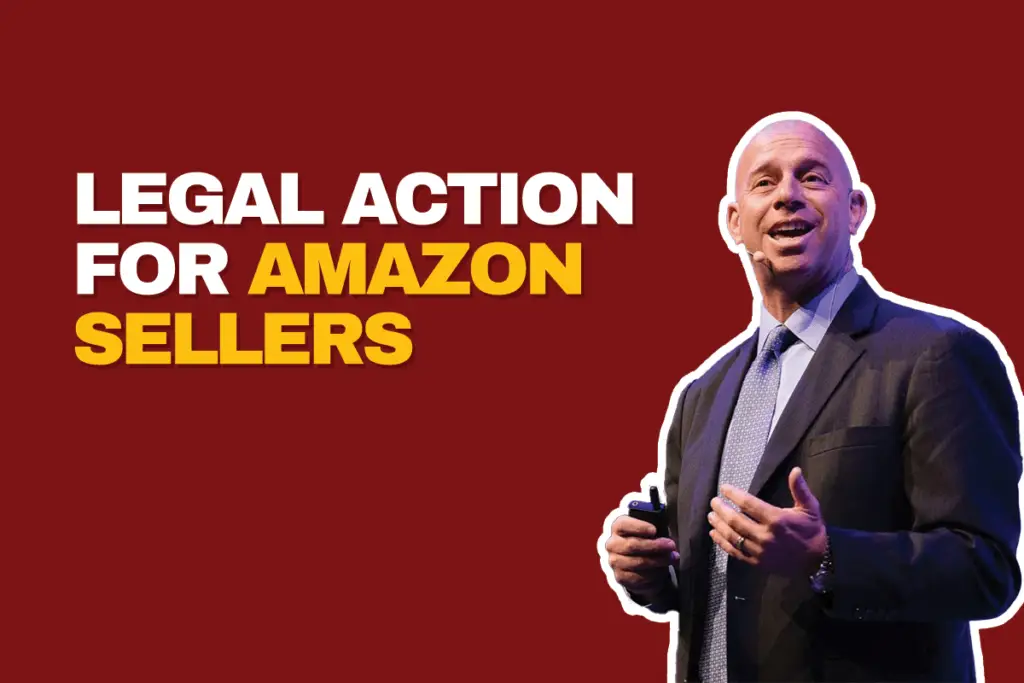Legal Action Against Amazon or Competitors: A Guide for Sellers

Legal Action for Amazon Sellers: A Guide to Protecting Your Business
For Amazon sellers, running a successful business means navigating risk, especially when issues arise that threaten your revenue or reputation. Legal action may become necessary when internal Amazon appeals fail or when outside parties cross the line. Whether you’re dealing with breach of contract, false counterfeit claims, or intellectual property theft, knowing when and how to take legal action can protect what you’ve built. This guide helps Amazon sellers understand the common types of disputes, how to respond strategically, and when to escalate the issue to court.
What Is Legal Action for Amazon Sellers?
Legal action refers to the process of using the court system to resolve disputes when informal or internal mechanisms are no longer effective. For Amazon sellers, legal action is often the final step when appeals and Amazon’s internal support don’t offer fair or timely resolutions.
Unlike Amazon’s in-house resolution systems, legal action gives sellers more control—whether that’s filing a claim against a third party, pursuing compensation for damages, or fighting back against unfair suspension or withheld funds. It’s about protecting your ecommerce business with enforceable legal rights.
Common Legal Disputes Amazon Sellers Face
Legal issues in e-commerce can arise suddenly and escalate fast. Here are the most frequent reasons sellers choose to take legal action:
1. Intellectual Property Infringement Disputes
Sellers may face takedowns, blocked listings, or account warnings based on claims that often don’t hold up in court. Common IP-related issues include:
Accusations of trademark infringement
Disputes over product patents
Copyright complaints regarding listings or product images
In many cases, these are competitive tactics rather than legitimate legal concerns. When Amazon doesn’t resolve the issue fairly, legal action may be your only recourse.
2. False Counterfeit Allegations
A growing number of sellers are hit with false counterfeit claims that lead to suspensions, withheld funds, or long-term reputational damage. Even when you have authentic products and proper documentation, Amazon may side with the accuser unless a court intervenes.
Legal action allows sellers to challenge false claims and restore their standing.
3. Breach of Contract Cases
Agreements with suppliers, logistics providers, freelancers, or joint venture partners can go sideways. Sellers may initiate or defend against legal action when:
A supplier fails to deliver or ships non-conforming goods
An agreement around exclusivity or payment is broken
A service provider causes account damage or loss
Contract breaches are one of the most common triggers for legal disputes in e-commerce.
4. Withheld Funds by Amazon
Amazon may hold onto seller funds during investigations, account suspensions, or after claims of policy violations. If these funds are critical to your business and Amazon refuses to release them, taking legal action may be your best option.
5. Denied Appeals and Permanent Suspensions
If your account has been permanently suspended and you’ve exhausted Amazon’s Plan of Action process, the next step may be legal intervention—especially if the decision was based on bad data, false reports, or misapplied policies.
How to Know When Legal Action Is Warranted
Taking a case to court should be a calculated move. Here’s when sellers should consider moving forward:
You’ve tried Amazon’s internal resolution process without success
The financial losses are significant and ongoing
Your reputation or brand is being damaged by false claims
You have a clear legal contract that was breached
Evidence shows Amazon acted unfairly or outside its policies
Step-by-Step: Navigating Legal Action as an Amazon Seller
Here’s a roadmap to help sellers who are considering legal action:
Step 1: Preserve Evidence
Documentation is everything. Be sure to gather:
Amazon policy violation notifications
Emails and chats with support or sellers
Sales reports and financial records
Product invoices and supplier agreements
Screenshots of listing removals or false claims
Step 2: Assess the Legal Standing
Have an attorney review your case to determine:
If there’s a breach of contract, defamation, or fraud
Whether the claim has merit and what relief is available
Which jurisdiction and court would be appropriate
Step 3: Attempt a Pre-Litigation Resolution
Legal counsel may suggest a cease and desist or demand letter. This can often lead to a favorable result without filing a lawsuit.
Step 4: File the Complaint
When informal efforts fail, your lawyer will file a lawsuit—either against Amazon, a supplier, a competitor, or another party.
If suing Amazon, many cases are filed in Washington State or California
If suing a third party, venue depends on where they operate
Step 5: Discovery and Strategy
Each side will gather evidence and take depositions. A strong discovery phase can lead to early settlement or strengthen your chances at trial.
Step 6: Settlement or Trial
If the other side is willing to resolve the case, settlement negotiations may end the dispute. If not, your case goes to court, where a judge or jury decides the outcome.
How to Avoid Litigation as an Amazon Seller
While some disputes are unavoidable, many can be prevented through smart, proactive legal practices.
Brand Protection Tactics
Register your brand with Amazon Brand Registry
Secure U.S. trademarks and patents
Use monitoring tools to detect unauthorized sellers or counterfeiters
Send warning notices through proper legal channels
🔗 Visit BrandEnforcementLaw.com to learn more about protecting your brand on Amazon and beyond.
Well-Drafted Contracts
A strong agreement minimizes risk. Be sure to include:
Scope of work and delivery deadlines
Payment structures and dispute resolution methods
Confidentiality clauses
Non-compete or exclusivity terms (when appropriate)
Policy Compliance
Always stay in alignment with Amazon’s latest rules:
Use legitimate suppliers with verifiable documents
Avoid product categories that trigger frequent complaints
Maintain accurate listings and high-quality images
Early Dispute Resolution
Communicate clearly with customers, vendors, and support teams. Many issues can be resolved before they escalate if addressed promptly and professionally.
When to Hire a Lawyer for Legal Action
Amazon’s appeal system isn’t designed for complex disputes. You need legal support if your business is losing money due to a suspension, a false claim, or contract fraud. It’s time to call a professional when:
Your account is suspended, and Amazon won’t respond
A brand or competitor files repeated false claims
Amazon is holding a large amount of your funds
Your supplier or business partner caused direct financial damage
You’re being sued—or need to sue—to protect your interests
📌 Please note: AmazonSellersLawyer.com does not offer free consultations. We provide legal services for serious sellers facing high-stakes legal problems. Contact us when you’re ready to take action.
Conclusion: Protect Your Business with the Right Legal Action
Legal action isn’t the first option, but sometimes it’s the only way to defend your business. Whether you’re dealing with bad actors, unfair treatment by Amazon, or a serious contractual issue, understanding your rights—and how to enforce them—can save your brand, your income, and your future on the platform.
If your business is at risk and you’re ready to fight back, the team at AmazonSellersLawyer.com is here to help you navigate the process with confidence.
